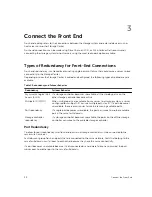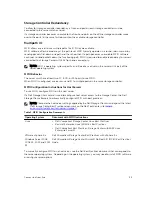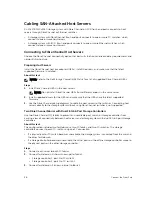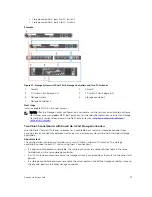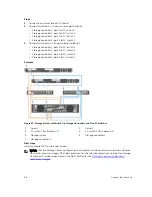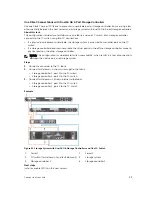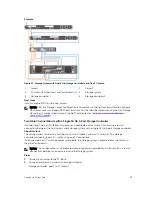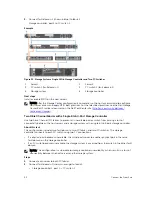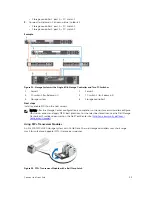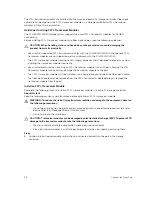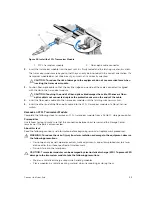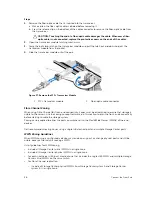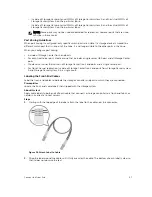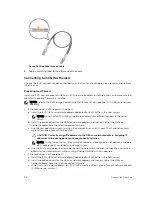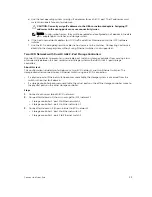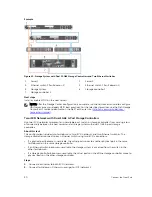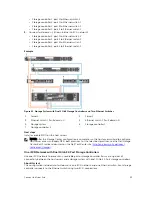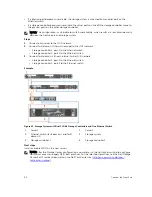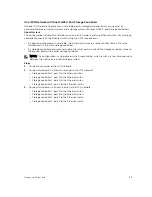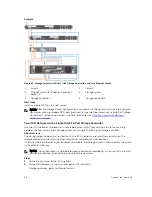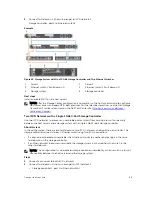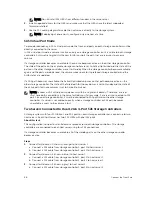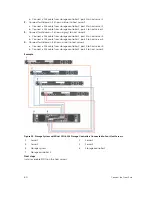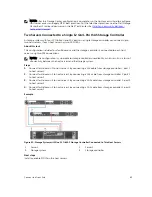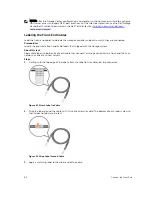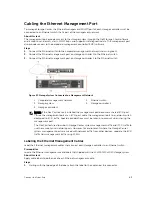
Figure 39. Wrap Label Around Cable
3.
Apply a matching label to the other end of the cable.
Connecting to iSCSI Host Servers
Choose the iSCSI connectivity option that best suits the front
‐
end redundancy requirements and network
infrastructure.
Preparing Host Servers
Install the iSCSI host bus adapters (HBAs) or iSCSI network adapters, install the drivers, and make sure that
the latest supported firmware is installed.
NOTE: Refer to the
Dell Storage Compatibility Matrix
for a list of supported iSCSI HBAs and network
adapters.
• If the host server is a Windows or Linux host:
a. Install the iSCSI HBAs or network adapters dedicated for iSCSI traffic in the host servers.
NOTE: Do not install iSCSI HBAs or network adapters from different vendors in the same
server.
b. Install supported drivers for the HBAs or network adapters and make sure that the HBAs or
network adapter have the latest supported firmware.
c. Use the host operating system to assign IP addresses for each iSCSI port. The IP addresses must
match the subnets for each fault domain.
CAUTION: Correctly assign IP addresses to the HBAs or network adapters. Assigning IP
addresses to the wrong ports can cause connectivity issues.
NOTE: If using jumbo frames, they must be enabled and configured on all devices in the data
path, adapter ports, switches, and storage system.
d. Use the iSCSI cabling diagrams to cable the host servers to the switches. Connecting host servers
directly to the storage system without using Ethernet switches is not supported.
• If the host server is a vSphere host:
a. Install the iSCSI HBAs or network adapters dedicated for iSCSI traffic in the host servers.
b. Install supported drivers for the HBAs or network adapters and make sure that the HBAs or
network adapter have the latest supported firmware.
c. If the host uses network adapters for iSCSI traffic, create a VMkernel port for each network adapter
(1 VMkernel per vSwitch).
48
Connect the Front End

